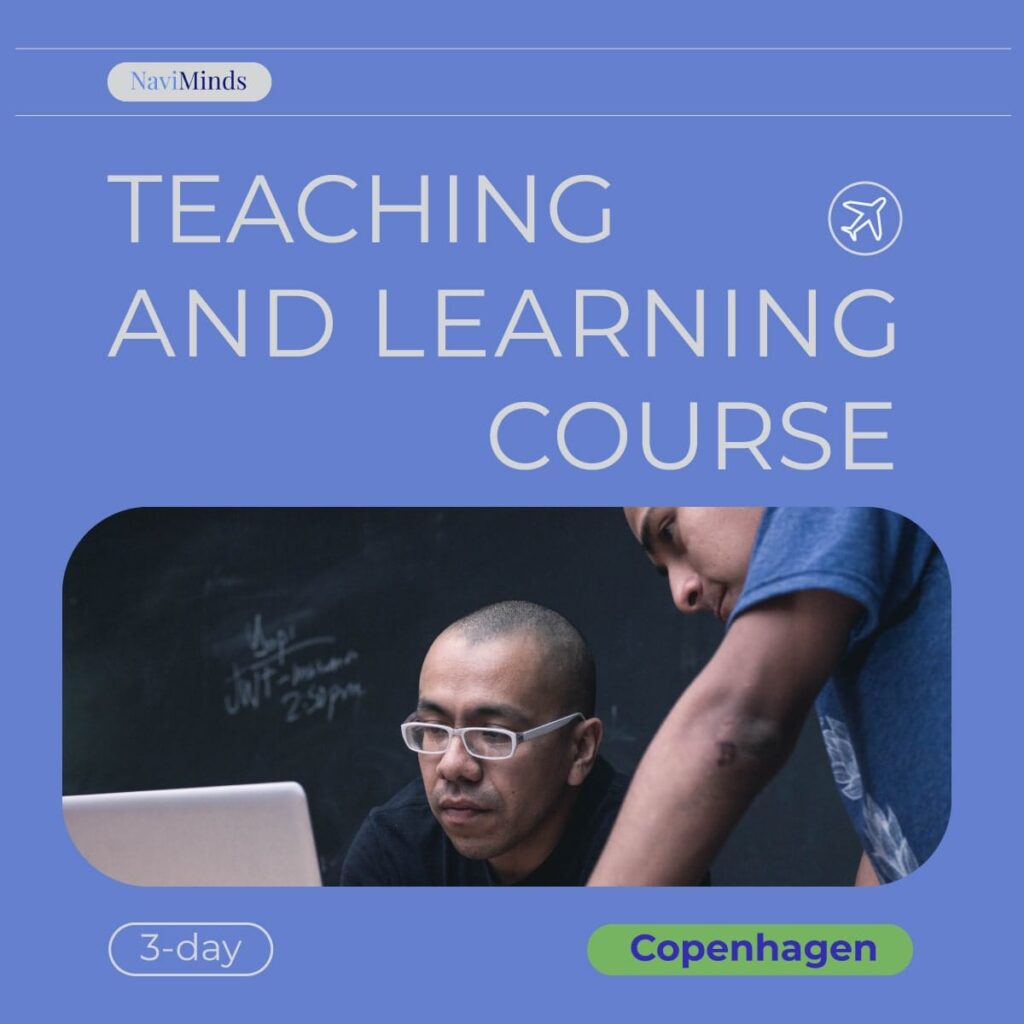
What drives your students? What ignites their passion for learning? As a trainer, how can you ensure your students achieve their highest potential?
Enter: The principles of teaching and learning.
Teaching should always be rooted in the science of learning. Research clearly shows that effective teaching strategies directly impact student success.
This article delves into seven foundational principles of teaching and learning, offering practical insights on how trainers can use them to become more effective educators.
Before diving into our seven principles of teaching and learning, let’s rapid-fire some essential principles.
Teaching and learning are dynamic processes that benefit from proven principles. Let’s dive into the seven essential principles that can transform any educational experience.

Teamwork makes the dream work! When students collaborate, learning flourishes.
Good learning is social and cooperative, not competitive and isolated. Students engaged in teamwork care more about the learning process. A collaborative environment enhances understanding and retention, preparing students for real-world teamwork.
When students work together, they can pool their skills and knowledge, learn from each other’s perspectives, and support each other’s learning challenges.
How to do it in practice?
This one’s a breeze! Put students in groups, ask them a question, and let them discuss. Whether you use that time to play Candy Crush or walk around doesn’t matter – you’ve already set the stage for cooperative learning.
Learning isn’t a spectator sport. Students must engage actively with the material—discussing, writing, and applying concepts.
At NaviMinds, we challenge the notion that information equals learning. Imagine reading a newspaper; you focus on sports while your neighbour is intrigued by the news of a new art gallery. Same paper, different takeaways.
True learning happens when students connect emotionally with the material and actively participate in the process.
Feedback is gold!
In a study conducted by the Danish military, feedback significantly impacted performance. Groups given feedback, whether positive or negative, outperformed those who received none. This aligns with research on raising children—neglect is more harmful than constant criticism.
Feedback provides direction and improves performance, making it indispensable in teaching.
Feedback will significantly influence your students’ performance and serve as an indispensable principle of teaching and learning.

Rome wasn’t built in a day, and neither is knowledge. Students need time to absorb and understand information.
Think of your first driving lesson—it wasn’t on a busy highway at night but on a quiet road at a slow pace. Even here, we consider the principles of teaching and learning.
Effective learning happens when students are given realistic timeframes to process information.
Expect the best, and you’ll often get it.
The Pygmalion effect refers to the idea that when we set high expectations, people will most likely rise to the occasion and perform better. The other version is called the Golem effect, which means that if we set low expectations, people will meet those low expectations and perform worse.
Case in point:
A study on twins showed what we can do with high expectations.
A set of twins were given a test with several mathematical questions. The twins were separated while doing the test; however, an evaluator joined them in the room while they were doing the test. For one of the twins, the evaluator said things like “Great job”, “you’re done with that already”, and so on. For the second twin, the evaluator said things like, “Oh, you haven’t done that”, “and you couldn’t do that”. The study lasted for a couple of hours.
The results?
By the end, the twin with positive reinforcement outperformed the other by 16%.
That’s a 16% difference in performance after only a few hours. Imagine the potential over days or months with consistently high expectations…

Variety is the spice of learning. Everyone learns differently—some through discussion, others through reading.
So, what does that mean for us trainers?
As trainers, we have many different tools in our arsenal that we can use. During one of our courses, I might include PowerPoint slides containing good-to-know statistics about a situation. The next moment, I give them small group work to discuss a question, and right after that, I give them an individual assignment.
As trainers, we can use various tools: PowerPoints, group work, individual assignments, questions, etc.. This diverse approach respects different learning styles and keeps everyone engaged.
Your students’ mindset is a key player. A growth mindset means that you believe that your intelligence, ability, and performance can be improved. The opposite is a fixed mindset, the belief that your talents are set in stone.
Example:
Want to learn French? Telling yourself, “I’ve always been good at learning new languages,” makes it easier. Conversely, “I’m never going to learn French” makes it harder. Positive self-perception significantly impacts learning.
How can we positively influence students’ self-perception?
As trainers, we can make a difference by praising students for their efforts. Research shows that praising students’ efforts, not just their achievements, can build resilience and motivate them to take on more challenging tasks, ultimately enhancing their learning experience.

Research continues to unveil the complex process of learning and its influencing factors.
By incorporating these seven principles of teaching and learning into your teaching routine, you can establish a more inclusive, impactful, and engaging learning atmosphere that addresses the diverse needs of every student.
NaviMinds provides a comprehensive course on teaching and learning that explores these principles and illustrates how to implement them effectively. Our course empowers educators with the tools and tactics to foster dynamic, impactful, and inclusive learning settings.
Join us to revolutionize your teaching approach and make learning a fulfilling journey for you and your students.
Dive into our other insightful and informative articles:
© 2024 NaviMinds – Designed by Aveo web&marketing